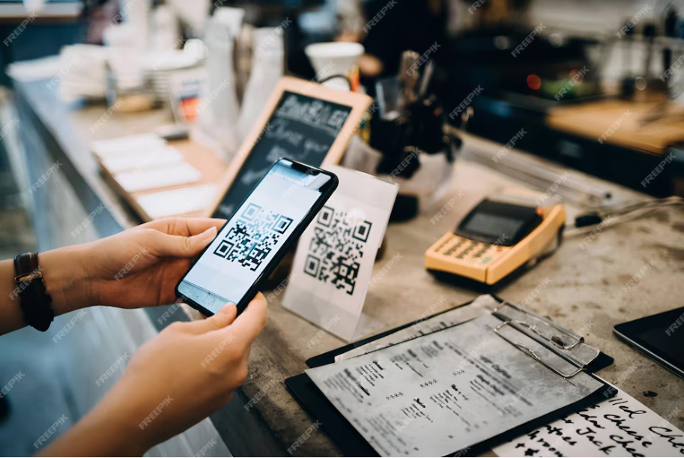The first thing merchants need to understand about payments in the Philippines is its inherent complexity. While digital payments are projected to grow by 16% and reach US$126 billion in gross transaction value by 2025, cash is still deeply embedded in the culture. But with its economy growing at 5.6% — the fastest rate in Southeast Asia — understanding how paymentswork in the Philippines is going to be key for any business planning to keep pace and succeed in this dynamic market. To thrive and survive, merchants must offer flexible payment options to cater to diverse buyer preferences.
A background on Philippines payments
To understand the popular payment methods in the Philippines, it helps to know a bit about the local context. One key driver is that a large portion of the population — 34.3 million or about 44% of the adult population — is considered unbanked. Another driver is the smartphone penetration rate, which stood at 80.4% in 2024. However, while most Filipinos use smartphones, usage is complicated by the fact that due to the country's low-ranked mobile and broadband internet speed, connectivity is still an issue
These different factors have resulted in a payments landscape with a unique blend of traditional and digital payment methods and a need for convenient cashless transactions, which businesses need to know to navigate. Let's look at the top payment methods used in the country today.
Popular payment methods in the Philippines
Cash
While cash has traditionally been the most popular payment methodin the Philippines, its dominance is slowly decreasing. A recent study shows that cash usage dropped from 96% to 87% in 2023 as more Filipinos shifted to using mobile walletsas their main payment method. That said, cash remains the preferred method especially in smaller businesses and informal sectors (small-scale, self-employed activities, with or without hired workers, typically operating with a low level of organization and technology).
In fact, despite the growth of digital options, 14% of e-commerce shoppers still prefer paying cash on delivery (COD). This comes from concerns about cybersecurity and the risk of hacking. While cash offers a sense of security, especially for those without bank accounts, it also comes with limitations, such as the inconvenience of handling physical currency and the risk of theft.
Mobile wallets
Mobile wallets are fast becoming the go-to payment method for many Filipinos. For a population with a high smartphone penetration rate and on the internet for almost nine hours a day, mobile wallets are easy to understand and use, convenient, flexible and widely accepted by many merchants. Consumers can make payments anywhere, anytime, just from an app on their smartphone, making mobile wallets the preferred method for online shopping, bill payments, and peer-to-peer transfers.
As a result, the country's digital wallet ecosystem is growing fast, with an estimated 258 million active digital wallet accounts as of 2022, making the Philippines the fifth largest globally in terms of digital walletpenetration.
Popular mobile wallets like GCash and Maya dominate the market, thanks to their ease of use and people's growing trust in digital transactions. Because of the flexibility and convenience they provide, many users maintain multiple accounts on different platforms. The government has also supported this shift with a favorable regulatory environment aimed at improving financial inclusion.
Credit cards
Credit cards are seeing a resurgence in usage. In the first half of 2023, spending increased by 39% and the number of credit cards in circulation grew by 14% year on year. This increase is driven by numerous factors, including changing perceptions, better financial education, tailored products, and even rising inflation.
While credit cards are less accessible to a large portion of the population, particularly those without a stable income or credit history, they are a popular choice among higher-income Filipinos. A 2024 study showed that Filipinos' perception of credit is improving, thanks to government and private sector efforts promoting financial literacy and inclusion.
Banks are also issuing credit cards tailored to different lifestyles and preferences, such as travel-focused cardsthat allow rewards to be converted to frequent flyer miles, or cards that offer rebates for every purchase for value-conscious customers. Many people are also turning to credit cards for their ability to spread outpayments and cope with higher prices due to inflation.
QR payments
QR code payments are gaining traction in the Philippines, thanks to the standardization of the QRph code. This standardized system has made it easier for merchants and customers to adopt cashless payments by allowing merchants to accept paymentsfrom any bank or electronic money issuer without the need for multiple codes. The Paleng-QR Ph program has extended this technology even to small market vendors in order to include them in the digital economy.

QR code payments are gaining traction in the Philippines
QR payments are convenient and accessible for smaller businesses that may not have the infrastructure for other digital payment methods, such as credit or debit card terminals. This makes it a good option for cashless transactions in day-to-day purchases, especially in public markets and transport hubs.
Debit cards and bank transfers
Debit cards and bank transfers are also popular options. Several large commercial banks issue ATM cards that also double as debit cards, making them a convenient option for cashless payments for retail transactions.
Bank transfers are used for larger transactions and peer to peer transfers. There are two widely used electronic transfer systems: InstaPay allows instant settlement of fund transfers up to Php50,000 while PesoNet has no maximum limit, although transfers are posted at the end of the day. In the past, bank transfers were also frequently used for paying utility and real estate bills via bankenrollment, but with the interoperable Bills Pay PH facility (based on the QRph system), more people are also able to use their mobile wallets and QR codes for these payments.
The e-commerce boom: payment methods to know
The Philippine government's push towards a cash-lite economy will seecash payments shrink further from 44% to 25% of retail transactions by 2027, with COD for online purchases expected to halve to 7%. Conversely, digital payments will soar. E-commerce digital wallet payments will grow to 42%, and point-of-sale transactions are forecast to more than double, reaching 43% by 2027.
Digital payments and mobile wallets are the most preferred payment method for e-commerce, accounting for 34% of e-commerce payments. However, given the Philippines' unique context, you still need to offer options such as cash-on-delivery and over-the-counter (OTC) payments. OTC payments use MSISDN (Mobile Station International Subscriber Directory Number) as a temporary digital ledger, which allows customers to pay cash at convenience stores, pawn shops, and other outlets for digital transactions. OTC paymentsare used by customers without access to digital banking or mobile payments. Offeringdigital paymentsalong with COD and OTC help avoid cart abandonment, which can occur if customers don't find their preferred payment option at checkout.
Aside from offering preferred payment methods, you should also optimize your customers' user experience on your website to ensure smooth checkout processes.
Payments in the Philippines: key takeaways
Now that you've read through the top payment methods and trends, here are the three key takeaways you need to remember:
- From cash to cashless
While cash remains a trusted payment method, the shift toward digital payments is undeniable. Strike a balance between offering traditional and digital payment options to meet the needs of a transitioning market. - The driving force of mobile walletsMobile wallets are quickly becoming the go-to for both online and in-person transactions, driven by the convenience of smartphones and evolving consumer habits. This underscores the increasing importance of seamless, tech-driven payment solutions.
- Don't ignore alternative cashless payments
Credit cards and QR code payments are gaining ground, offering consumers more flexibility especially those with access to bank accounts and credit facilities. As financial inclusion initiatives take hold, even small businesses are integrating these QR solutions, signaling the Philippines' transition into a cash-lite economy.
Helping you navigate the payments landscape in the Philippines
With so many payment options and customer preferences in the Philippines, having a reliable partner to streamline the process is essential for your business to succeed. To navigate this complex landscape, you need a partner that can:
- Offer both global and local payment methods, ensuring you meet customer preferences and boost conversion rates.
- Simplify your checkout and settlement process for smoother, more efficient operations.
- Keep transactions secure and protect your brand with advanced, real-time fraud protection.
Antom, a payment gateway, provides all these features and more. Antom helps simplify payments in the Philippines and gives you access to billions of customers worldwide through a single integration.
Want to know more about payments in the Philippines? Contact us today.
Frequently asked questions
Cash is still the most popular payment method in the Philippines, although its dominance is decreasing as digital payments, particularly mobile wallets, continue to grow.





